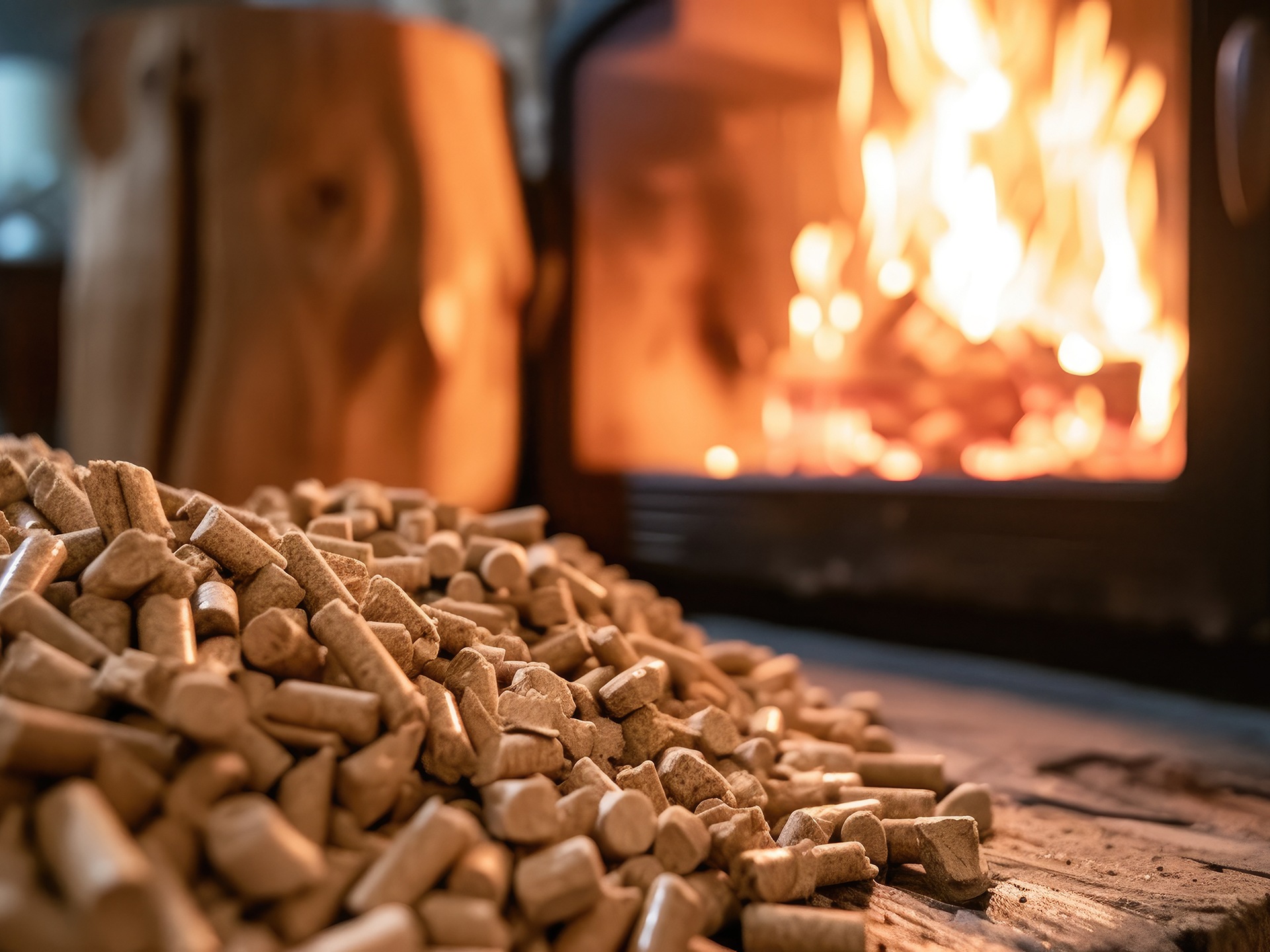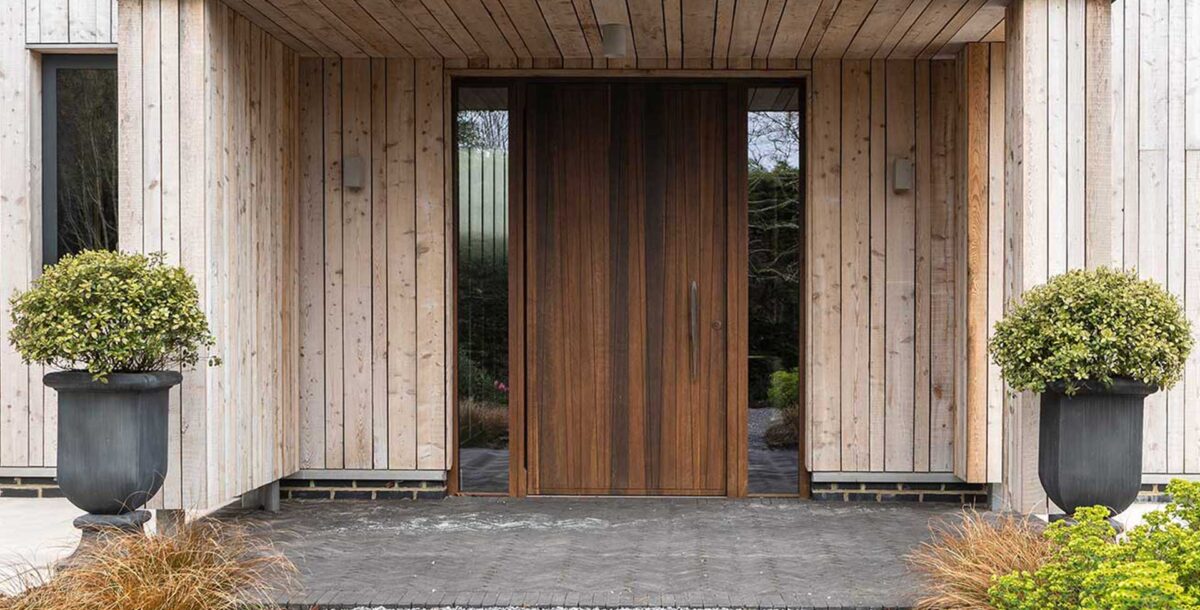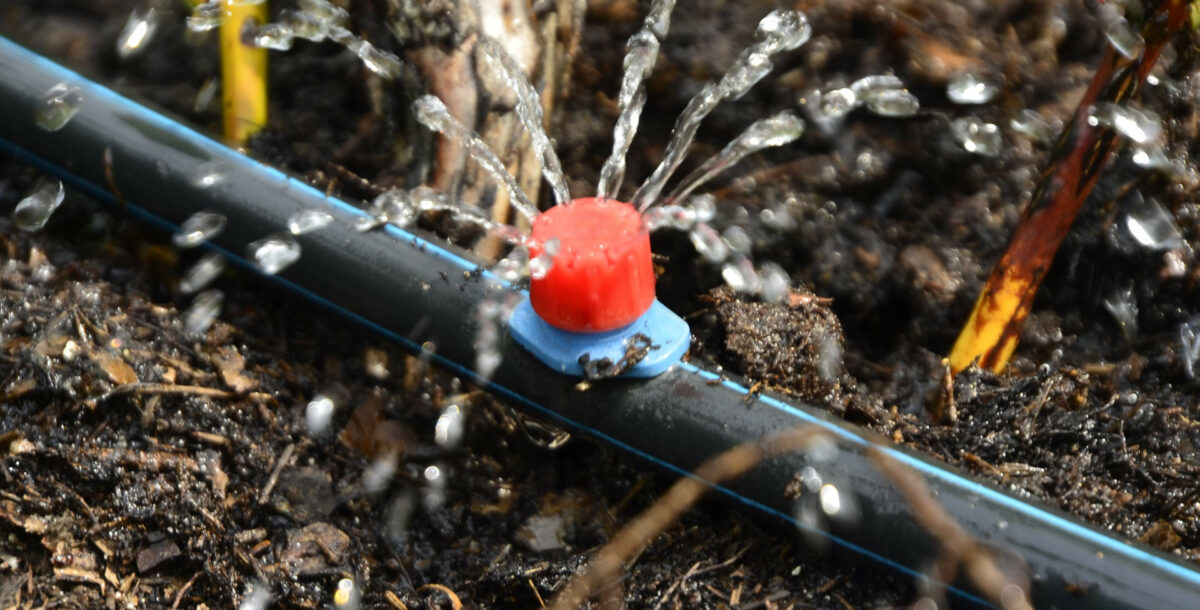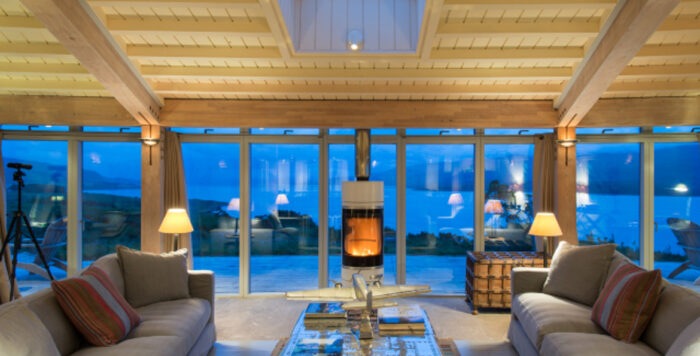Biomass boilers: what are they, and do they make financial and environmental sense?
What is a biomass boiler? And could it be the right heating system for you?
Biomass boilers are a lower-carbon heating option that could be worth considering if you need to install a new heating system. Plus, they may attract a £5,000 grant under the Boiler Upgrade Scheme. Read on to find out if a biomass boiler could be the right heating solution for you.
What is biomass?
Biomass really just means ‘natural stuff’; more specifically, in this context, it means material from recently living, now dead, organisms that is suitable to be burnt as a fuel source. Most commonly, in a domestic setting, this means wood pellets, wood chips or logs.
At a larger scale, biomass is also used to generate about 5% of the UK’s power through the burning of wood chips, pellets, plants, biofuel, and waste in power plants. You can find out more about this aspect of biomass on the website of Biomass UK.
Biomass boilers
Domestic biomass boilers work in the same way as traditional gas or oil-fired boilers, using a heat exchanger to heat water that then heats the home via radiators and/or underfloor heating, plus a separate hot-water cylinder. You can plumb a biomass boiler into your existing heating system.
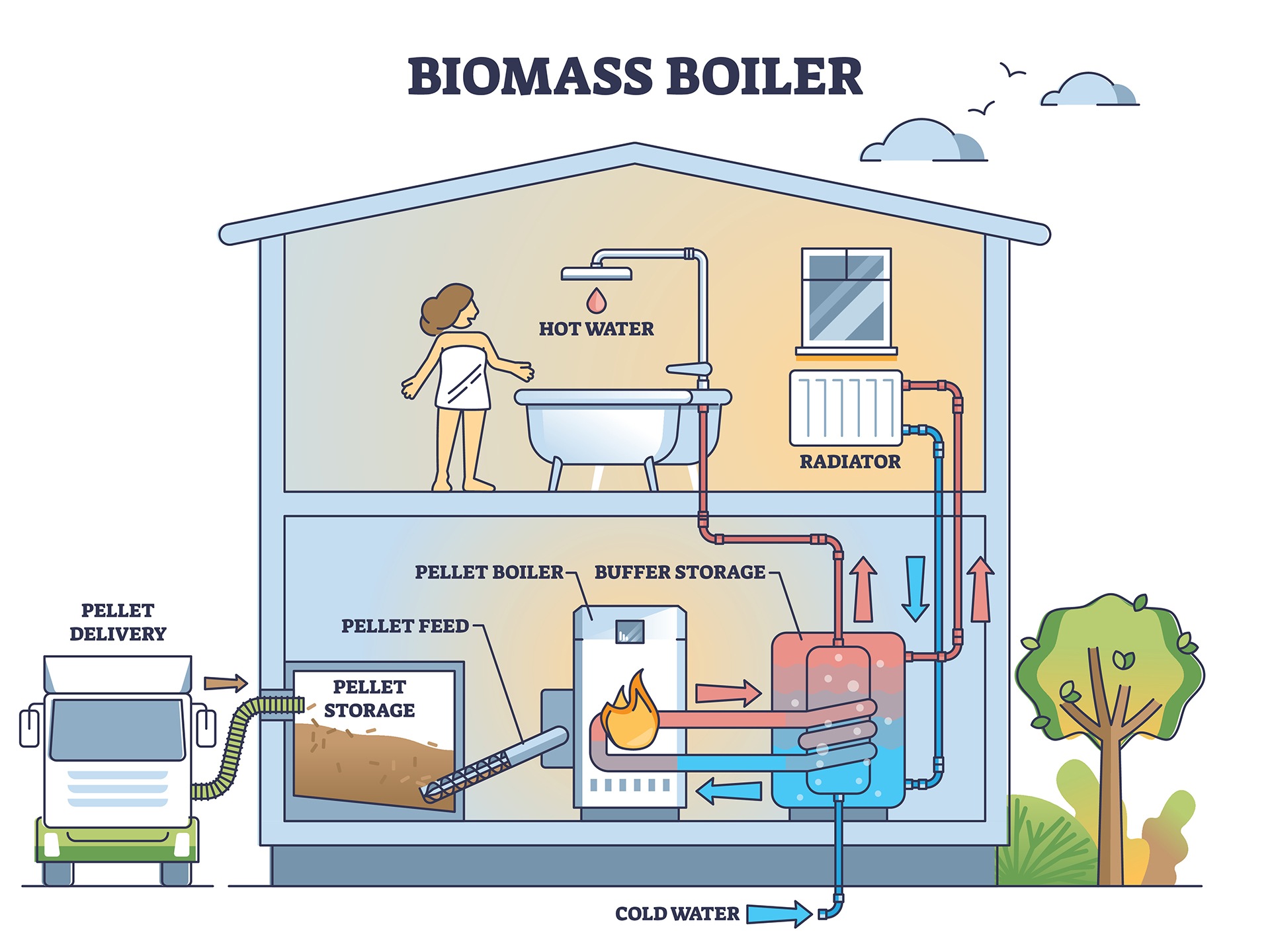
Image credit: Adobe stock
The boilers are about the size of a washing machine or large filing cabinet. They have a burn chamber, heat exchanger, outlet to the flue, chamber for the ash, and digital control panel. Most modern boilers are fed automatically from a fuel hopper with enough pellets to provide the required heat output, with the input of air regulated to match. Some systems incorporate a buffer tank to store hot water to make the most of the energy generated when the system is on. Many of the new biomass systems can be controlled through their own app.
Cleaning and maintenance
Many of these boilers are now self-cleaning, meaning you only have to remove the ash every couple of months. (It makes a good addition to compost.) You’ll need to have the flue cleaned every so often too, and the boiler serviced annually.
Wood pellets
Most domestic biomass boilers use wood pellets. These are made from highly compressed sawdust and wood shavings, often made from waste softwood, such as small branches and twigs: leftover bits of trees that can’t be used in many other ways. If these waste products weren’t used as fuel, they might well be left to rot, which would produce carbon dioxide anyway, plus methane, a much worse greenhouse gas.
The sawdust is compressed under great pressure to form a sort of woody dough, which is then pushed through a die to form narrow tubes of wood pulp. These are chopped into short sections to form the pellets.
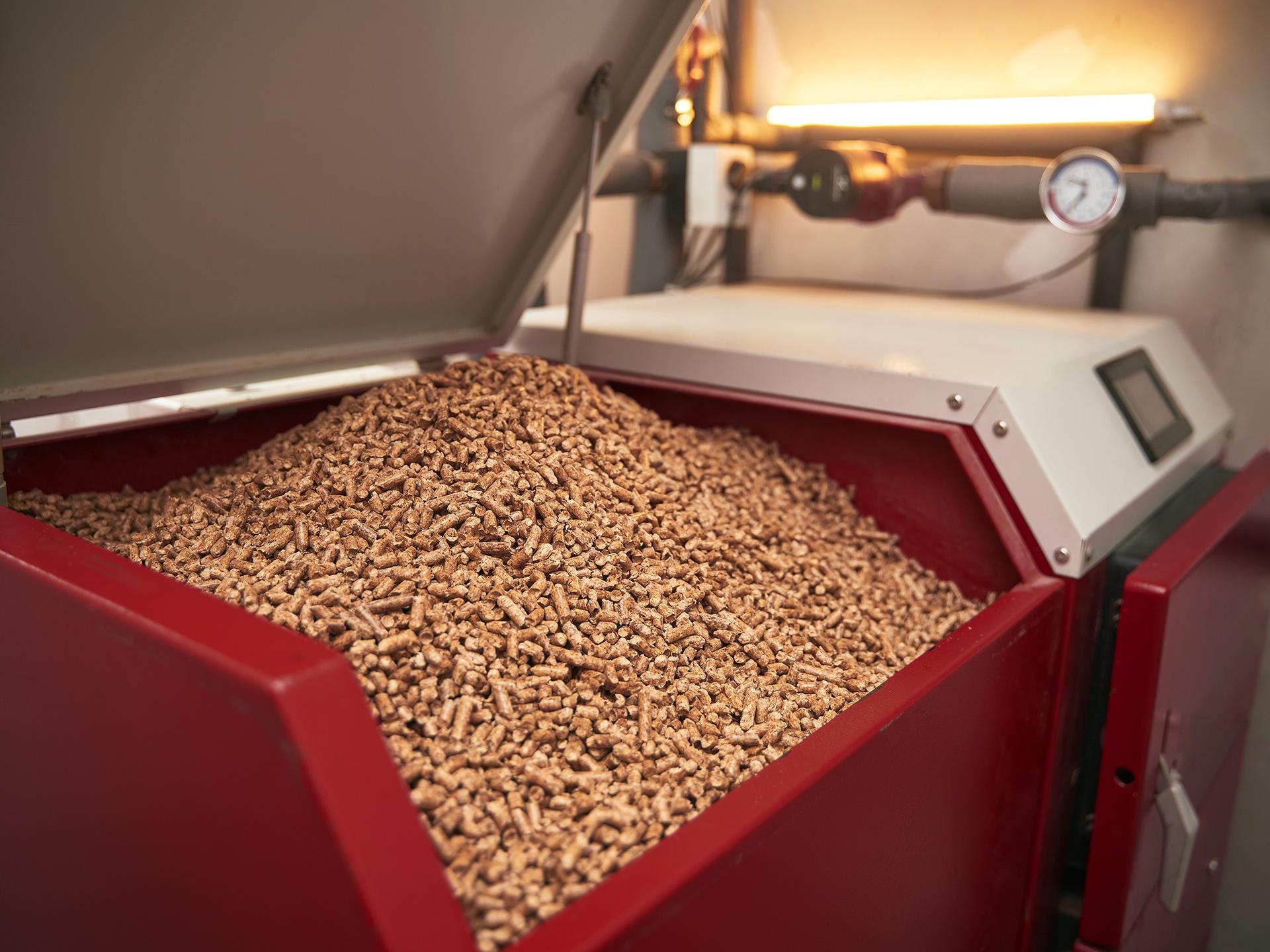
Image credit: Adobe stock
Pellets are rated for quality. The EN plus certification scheme is a scheme that requires pellets to meet standards covering things like size, strength, amount of ash produced, moisture content, density, calorific value. It’s recommended you use pellets rated EN plus A1. Lower quality pellets made from recycled wood, say, may release potentially harmful chemicals as they burn and won’t produce as much heat.
The cost of pellets can be affected by many things, such as the health of the building trade – when there’s lots of building going on there will be lots of waste timber to turn into pellets – or the weather – adverse weather can reduce the number of trees being felled. It is hoped more and more pellets will be sourced from the UK as more wood becomes available to make them thanks to government initiatives such as the England Trees Action Plan.
Fuel store
You can buy pellets in 15kg bags, by the pallet load (a pallet holds about a tonne), or loose, in which case they can be blown into your fuel store from a delivery truck through a long hose. This highlights one thing that can be an issue with biomass boilers: you need to have somewhere dry that’s big enough to store your fuel in reasonably large quantities, say, 10m2 within 20m of your boiler. Prefabricated fuel stores are available that feed the pellets into your boil via an auger or suction tube. You will need to store your pellets somewhere that the lorry delivering your pellets can access. There are companies that will deliver pellets nationwide.
Stove vs boiler
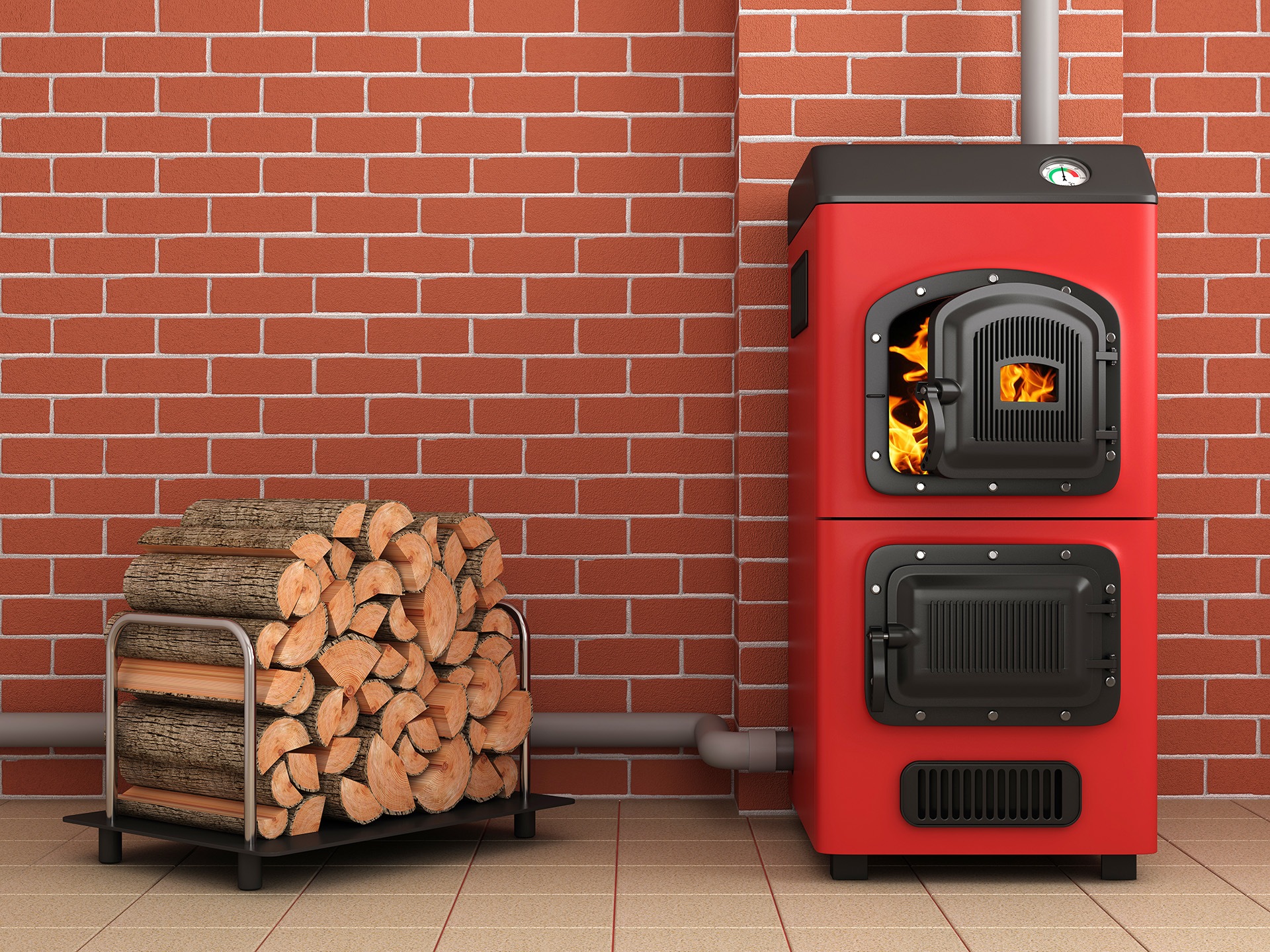
Image credit: Adobe stock
You can get log boilers as well as ones that run on wood pellets. These are not the same as log burners. A log burner is a stove that heats just one room. (It could also have a back boiler to provide hot water.) A log boiler on the other hand is a larger unit that will provide heat for the whole home via a central heating system.
Log boilers
Log boilers take logs up to about 0.5m long, which need to have been seasoned (dried) for a year or two so the moisture content is below 20%. If you’ve got space, you can buy green logs cheaper and season them yourself.
Unlike other types of biomass boiler, log boilers can’t be fed automatically. You have to load them up with logs yourself a couple of times a day. Log boilers work best for people who don’t mind doing this, and who have access to woodland to source the logs.
Other fuels
You can also get boilers that are powered by woodchips. Woodchips are less energy dense than pellets, so you will need an even bigger fuel store if you’re going to use woodchips. If you have a good supply of your own wood, and somewhere to season it – say, you live on a farm – this type of stove could be a good option for you. You can even chip the dried wood straight into your wood store. Woodchips are cheaper than wood pellets, and modern woodchip boilers can have an automated fuel delivery system like pellet boilers.
Combined pellet-electric systems are available. And biomass boilers work well alongside other technologies, such as solar panels, though that means two times the significant upfront cost.
Flue
Another thing to consider is the flue. You will need to have somewhere to put a stainlesss steel flue. This might require planning permission, if, for example, you live in a listed property or conservation area. You could make use of an existing chimney, but it would probably need to be lined before you could use it.
Air pollution
Biomass boilers produce some air pollution: typical more than a gas boiler but less than an oil-fired boiler. But, generally, for modern boilers its a very small amount: small quantities of nitrogen dioxide (NO2) and sulphur dioxide (SO2) and some small particles called particulates. Particulates can have a negative impact on health, but, as you can see from the latest government statistics, air quality, even in urban areas, has improved a great deal over recent decades.
Many urban areas are still Smoke Control Areas, where you can only burn smokeless fuels. If you wanted to install a biomass boiler in one of these areas, you would need to ensure it was an ‘exempt’ appliance approved for use in these areas under the Clean Air Act. This means that it has been tested to ensure it only produces minimal emissions. Each country in the UK certifies exempt appliances separately.
Sustainability
A biomass boiler is an alternative to a traditional fossil-fuel-powered boiler run on gas, LPG or oil; to electric storage heaters, or to a heat pump. Biomass counts as a carbon-neutral fuel because the amount of carbon released during burning is equivalent to the amount that was stored in the wood while it grew. However, it is not a zero-carbon fuel because CO2 is released when biomass burns.
So long as trees are being planted to replace the ones used for timber and fuel, and the woodland is being managed responsibly, biomass is a renewable energy source. The Biomass Suppliers List is a good place to start looking for fuel sourced from responsibly managed woods.
There are significant carbon savings to be had in comparison with other energy sources, particularly old fossil-fuel powered heating systems. For more details, take a look at the Energy Saving Trust’s table of estimated carbon savings from biomass.
Maintenance
You need to have your biomass boiler serviced every year like a traditional boiler and you will need to clean out the ash every few weeks: more frequently with a log boiler, less frequently with a pellet boiler.
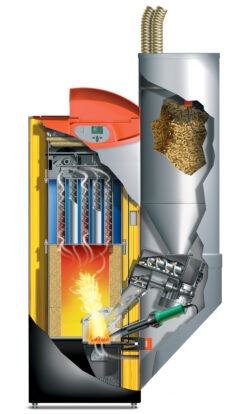
Image credit: GUNTAMATIC Heiztechnik GmbH CC BY-SA 3.0 https://commons.wikimedia.org/w/index.php?curid=20200339
How much do they cost?
Biomass boilers are expensive. You may get a contribution of £5000 from the government’s Boiler Upgrade Scheme (BUS), but they are still pricey. And the BUS has a lot of qualifications and exceptions. For example, under the scheme, biomass boilers:
- can only be installed in rural properties,
- can only be installed in properties with no connection to the gas grid,
- cannot be installed in eligible self-builds.
Prices vary according to the size and level of automation, but a domestic set-up could cost £4000 to £10,000 for a manually-fed log boiler set-up and £10,000 to £25,000 for an automatically fed pellet boiler system.
From 2014 to 2022 domestic biomass boilers were supported under the Renewable Heat Incentive scheme (RHI), and, under this scheme, which is no longer open, 12,500 biomass boilers had been installed by the end of 2022. (A similar scheme in Northern Ireland resulted in the Renewable Heating Incentive scandal.)
Running costs
Pellets generate 5000kW of heat per tonne, wood chips 3500kW, and logs 3000kW. Over a winter, a biomass boiler in an average house will use between two and five tonnes of pellets. Pellets currently cost about £400 per tonne, wood chips and logs are considerably cheaper. You pay less if you can take bulk deliveries rather than lots of smaller deliveries.
The Energy Saving Trust suggests you could save about £700 a year running a biomass boiler versus an LPG system; and over £1000 a year if you are replacing electric heating. But it depends on many factors including the size of your house, how well it is insulated, your energy use, the age of your existing heating system etc. You are unlikely to save anything if you already have a modern gas-condensing boiler.
Installation
You need to get a plumber to install your biomass boiler. Look for someone who is a HETAS registered. Get quotes from different suppliers and ask for references for domestic projects that have installed. Ask if you can talk to householders with biomass boilers they have installed.
Where biomass works
Biomass boilers tend to be a good ‘fit’ for larger, older properties in rural areas. In 2023 the Department for Energy Security and Net Zero published its Biomass Strategy, which states: ‘Biomass will likely have a role in heating in certain properties such as off-gas grid homes that are not readily suitable for heat pumps, and where appropriate mitigations can be set in place to minimise air-quality impacts. The government is considering a range of options to decarbonise these types of properties.’

